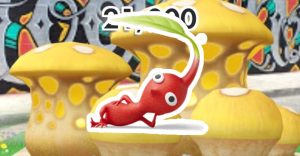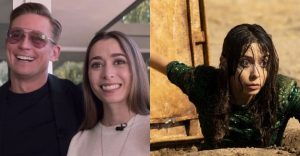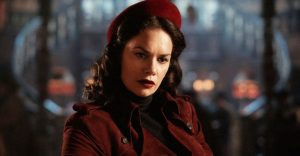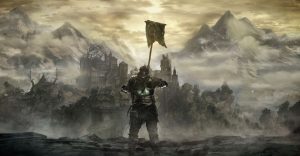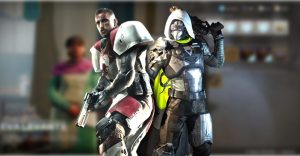15 Things You Didn’t Know About Iron Giant
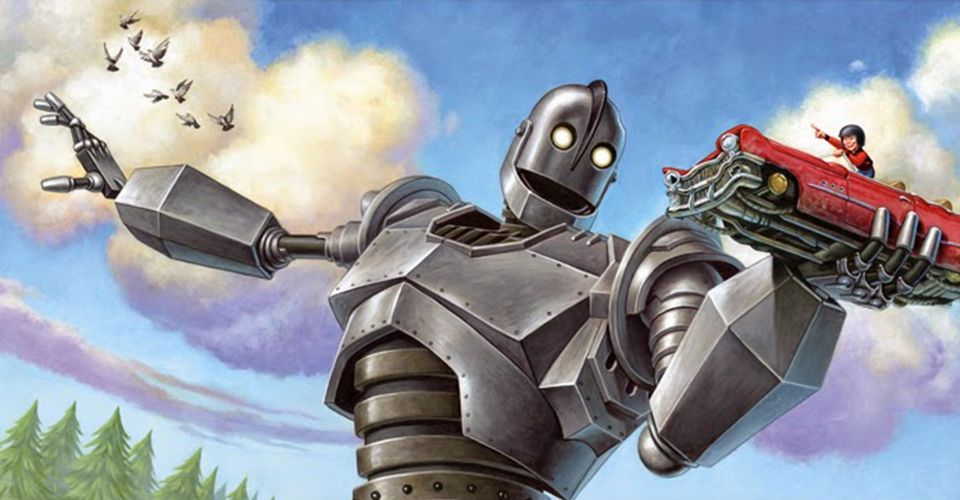
The Iron Giant is one of the most classic and beloved animated feature films of all time. The story of Hogarth and his giant friend is exciting, entertaining, comforting, and appealing to children and adults. On a deeper level, the movie sparks several conversations regarding gun control, war, and fatherhood – themes that were as timely in 1999 as they are now.
This Warner Bros animated film, directed by Brad Bird, was adapted from British poet and author Ted Hughes’ 1968 novella The Iron Man, a book that circulated in Hollywood for a long time before it finally got picked up for an adaptation.
While The Iron Giant clearly failed to succeed at the box office due to bad timing and marketing miscalculations, having only grossed $5 million on its opening weekend and $23 million domestically up until this day, the movie was received with overwhelming critical acclaim (with a “Certified Fresh” score of 96% on Rotten Tomatoes) and kick-started many prominent careers. Over time, the film developed a massive fan following and became a reference point to many animators.
If you love this movie and its characters, then you should definitely catch up with these 15 Things You Didn’t Know About Iron Giant.
15 THE REASON FOR HIS NAME CHANGE

Though the character was always described as being a giant, the official reason why The Iron Man’s book title was adapted to The Iron Giant in the movie is because producers wanted to avoid confusing the American public with Iron Man, the Marvel Comics superhero.
Marvel’s Iron Man was introduced in a 1963 comic book, five years before the Ted Hughes novella was written. While the two characters share basically no similarities, The Iron Giant’s production company Warner Bros. felt like the The Iron Man title could potentially raise intellectual property concerns that could be avoided. Also, it just didn’t make any sense to promote the name of a character that was already attached to a different, successful brand. Hey, bigger is better right?
14 THE STORY’S ORIGINAL SETTING AND PLOT

In the Ted Hughes’ novella, the story of Hogarth and his Iron Giant friend takes place in England. It is a very short book of five chapters that lives up to its name, The Iron Man: A Story in Five Nights.
The novella is basically about the Iron Giant defending Earth from an extraterrestrial monster (which resembles a dragon) that has crashed on top of Australia. The relationship between Hogarth and his mechanical friend isn’t as thoroughly developed in the book as it is in The Iron Giant movie.
The cinematic adaptation is a rare example of an instance in which a film has to expand on a book’s story instead of trimming the plot down to fit it into a movie’s 90 minutes of running time.
13 THE IRON WOMAN SEQUEL

In 1993, twenty-five years after The Iron Man was published, Ted Hughes released a sequel to the story, titled The Iron Woman.
The sequel mirrors the original novella in almost every way, except that The Iron Woman mostly focuses on environmental issues, whereas The Iron Man deals with war. The characters of Iron Woman and Lucy, her human friend, draw a perfect parallel to the characters of Iron Man and Hogarth. The original pair even appears in the sequel as Lucy reaches out to Hogarth and Iron Man asking for help to neutralize an initially very angry Iron Woman.
The Iron Woman is just as imaginative and socially aware as its predecessor, but it never caught the same amount of attention and acclaim as The Iron Man did around the world.
12 IT WAS ADAPTED AS A MUSICAL

The Who’s lead guitarist and songwriter Pete Townshend loved Ted Hughes’ The Iron Man novella so much that he adapted it into a musical in 1989 (ten years before The Iron Giant movie), which was called The Iron Man: The Musical by Pete Townshend.
The musical’s studio album features The Who’s lead vocalist Roger Daltrey, the American blues legend John Lee Hooker, and the legendary singer Nina Simone. The most popular songs from the album are “A Friend Is a Friend” and the opening number “I Won’t Run Anymore.” There are also the brilliantly titled songs “I Eat Heavy Metal” and “Man Machines.”
Warner Bros. was such a fan of Pete Townshend’s work that it considered making The Iron Giant a musical, but director Brad Bird decided that the film worked better without any singing numbers.
11 IT WAS BRAD BIRD’S FIRST TIME DIRECTING

The Iron Giant was Brad Bird’s very first time directing a movie – animated or otherwise. His prior experience had been directing a few episodes of The Simpsons and one episode of Steven Spielberg’s Amazing Stories series. At the time when The Iron Giant was being developed, Brad Bird was attached to the production of a different animated film, Ray Gunn, which never came out.
After The Iron Giant’s undeniable critical acclaim, Brad Bird was propelled into stardom. He went on to work for Pixar on The Incredibles (2004) and Ratatouille (2006), branched out to live-action territory on Mission: Impossible – Ghost Protocol (2011) and Tomorrowland (2015), and is currently working on the Pixar sequel The Incredibles 2 and on the movie adaptation of James Dalessandro’s novel 1906.
10 WARNER BROS. FEATURE ANIMATION

The Warner Bros. studio was going through a lot of changes in the 1990s, including a merger with Turner Entertainment. As the two companies became one, Warner Bros. decided to transform the Turner Feature Animation division into Warner Bros. Feature Animation.
The goal of the division was to compete with Disney’s highly successful slate of animated features in the 1990s, which was kick-started by The Little Mermaid (1989), Beauty and the Beast (1991), Aladdin (1992), and The Lion King (1994). The first movie Warner Bros. Feature Animation released was none other than Space Jam in 1996. Quest for Camelot came later, in 1998, and The Iron Giant became the division’s third film in 1999.
Warner Bros. Feature Animation was able to release two more features, but after that, Warner Bros. ultimately gave up on the division for nearly a decade. The animated segment of the studio was eventually rebranded as Warner Animation Group, which has since released the very successful The Lego Movie (2014), Storks (2016), and The Lego Batman Movie (2017).
9 THERE WERE NO KENT OR DEAN

Two of the most memorable characters in The Iron Giant were completely made up for the movie, having never existed in Ted Hughes’ novella.
Kent Mansley, the U.S. government official who investigates the existence of the Iron Giant, and Dean McCoppin, the Beat Generation sculptor who owns a junkyard, were completely original characters created by Brad Bird to complement the story’s adaptation to the United States. In the movie, Dean’s junkyard becomes the Iron Giant’s first residence on Earth, and Kent serves as one of the story’s most prominent antagonistic forces.
Kent is voiced by the legendary Christopher McDonald, whose voice carries a lot of suspicion and authority. Dean, on the other hand, is voiced by singer Harry Connick Jr., who was most recently an American Idol judge and a daytime talk show host.
8 HE WASN’T AN ALIEN IN THE BOOK

Another major point of difference between The Iron Giant movie and The Iron Man book is the origin of the character itself.
In the film, the Iron Giant comes from outer space, crashing onto Earth like a meteorite. In the book, however, the character actually emerges from the ocean, and it is the evil dragon-looking monster that comes from space and crashes onto Earth.
Because The Iron Giant movie is set in the 1950s, director Brad Bird liked the idea of having the character fall from outer space, as the “space race” was a very prominent topic during those times in the United States, as well as the possibility of being destroyed by a nuclear weapon. It made sense that the Iron Giant character would pose a real intergalactic threat to the country in the film.
7 IT HAD A MUCH DARKER ORIGINAL SCRIPT

Nuclear weapons, Cold War, 1950s, war – all keywords attached to The Iron Giant.
It comes as no surprise that the first drafts of the movie’s script were much darker than the end result. Confrontations between the United States and the Soviet Union were much more prominent in the first script, and the imminent threat of being destroyed by a nuclear weapon was originally a key theme throughout the film.
Because The Iron Giant was always meant to be an animated feature meant for children, studio Warner Bros. and director Brad Bird eventually lightened up the script so that those themes were merely underlying factors in a journey about family, friendship, and courage. While the movie still got criticized for being too “pro-gun control,” it is far from making specific remarks about controversial topics.
6 IRON GIANT’S DESIGN

The original sketches for the movie’s Iron Giant character, which were ultimately responsible for his overall appearance, came from renowned artist Joe Johnston. Joe’s credentials include being the art director for Episodes IV and V of Star Wars and an Oscar-winning visual effects artist for Indiana Jones: Raiders of the Lost Ark.
Warner Bros. also credits the 1951 film The Day the Earth Stood Still for much of the look and feel found in The Iron Giant and its title character.
Just like the Star Wars’ AT-AT walkers and The Day the Earth Stood Still’s Klaatu humanoid, The Iron Giant’s Iron Giant is a rusty silver machine that moves in a cool mechanic way and gives off the appearance that it has existed for many years.
5 IRON GIANT WAS VOICED BY VIN DIESEL

Before his incredibly successful run in The Fast and the Furious franchise, The Chronicles of Riddick, and xXx, actor Vin Diesel provided his voice for the title character in The Iron Giant.
As a matter of fact, the Iron Giant is his only voice work for an animated character in a feature film aside from the lovable Groot in the Guardians of the Galaxy franchise. The two movies are fifteen years apart!
According to producer Allison Abbate, the Iron Giant needed a voice that was deep but also full of character. The studio and the filmmakers agreed on Vin Diesel due to his serious yet charming voice, which perfectly captured both the heart and the stiffness of the friendly giant. While threatening at first, the actor’s voice was also able to make children feel comfortable, a skill Disney also explored in the Vin Diesel-led The Pacifier.
4 IT FEATURED A CG BREAKTHROUGH

Aside from The Iron Giant’s critical acclaim in regards to story, another factor that likely opened the Pixar doors for Brad Bird is that the film is apparently the first 2-D animated feature to have an entirely computer-generated (CG) character in it.
This technology was still in its very early incarnation at the time. Prominent computer-animated films were Pixar’s Toy Story (1995), A Bug’s Life (1998), and Toy Story 2 (1999), as well as DreamWorks’ Antz (1998). 1999’s The Iron Giant was considered a major feat in animation.
The choice of having a CG Iron Giant in a 2-D movie was two-fold: animators claimed that it was hard to draw a mostly metallic character, and the use of CG also served to further the notion that the giant robot did not belong in that world.
3 HOGARTH WAS RED-HAIRED

The human protagonist of The Iron Giant, the 9-year-old boy Hogarth, wasn’t always meant to look the way he did in the movie.
Originally, Hogarth was red-haired and featured freckled cheeks. However, his voice actor Eli Marienthal had so much personality that filmmakers started to record the boy on video during his voice-capturing sessions. A lot of the actor’s physical traits were eventually applied to the animated character, and Hogarth’s face started to look a lot like young Eli Marienthal’s, including the absence of freckles and the brunette hair. Aside from The Iron Giant, Eli also played Steve Stifler’s younger brother in 1999’s American Pie.
A recent example of this practice was in Disney’s animated feature Moana, where the title character was shaped according to the physical traits of her voice actress, Auli’i Cravalho.
2 HOGARTH’S LAST NAME

Another particularly undefined trait from Ted Hughes’ version of Hogarth in The Iron Man novella is the absence of a last name for the 9-year-old boy.
For The Iron Giant movie, Warner Bros. and the filmmakers decided to honor Ted Hughes and name Hogarth after the author. That’s how the boy became Hogarth Hughes and his mother, voiced by Jennifer Aniston, became Annie Hughes.
Unfortunately, Ted Hughes passed away in 1998, a year before The Iron Giant came out in theaters. The naming of Hogarth was only meant to be a nod to the author, but it suddenly also became a way of honoring his image and acknowledging his passing. Up until his death, he had been very enthusiastic about the direction Brad Bird had taken his story.
1 THE ORIGIN OF ROCKWELL, MAINE

Another important reference to The Iron Giant had a relationship to the fictional city where the film took place: Rockwell, Maine. As previously stated, The Iron Man novella took place in England, so the filmmakers had to choose the rural American city where the story would be adapted to.
There is no such city in the state of Maine. The name Rockwell came from the influence of author and painter Norman Rockwell to the movie. Brad Bird stated that the city was designed to have a “Norman Rockwell feel” to it.
It was important to place The Iron Giant in a rural city that was mostly secluded from modern civilization to justify the fact that humanity as a whole didn’t notice the arrival of the Iron Giant right away.
—
Are you a longtime fan of The Iron Giant? Were you surprised by any of these facts? Let us know in the comments below!
About The Author












